.jpg)
The Enterprise Investment Scheme (EIS) offers tax reliefs to individual investors buying new shares in companies that want to grow. Because the reliefs are substantial, HMRC introduced a ‘risk to capital’ condition to combat misuse of the scheme.
How much can be raised under the EIS scheme?
Under the EIS scheme, up to £5 million each year can be raised, and a maximum of £12 million in a company’s lifetime. This includes amounts received from other venture capital schemes. A key condition is that a company must receive investment under a venture capital scheme within 7 years of its first commercial sale.
What are the reliefs available to an investor?
In summary, the reliefs available on a qualifying investment are:
- income tax relief of 30%;
- capital gains tax reinvestment relief;
- capital gains tax exemption for the EIS shares themselves;
- automatic share loss relief against income (subject to adjustment for income tax relief given).
The generous nature of these reliefs has seen EIS become a target for promoters designing investment opportunities into companies which just about meet the qualifying conditions but, in reality, are aimed at capital preservation. That is, securing the relief with a high probability of returning the capital to the investors after the minimum holding period ends. HMRC were concerned that the scheme was not operating as intended so in 2017 a ‘risk to capital’ condition was introduced. All prospective investments must meet this condition before HMRC will issue a positive advance assurance opinion, or an EIS3 form.
The condition has two parts, both of which must be met. The first is that the company must have objectives to grow and develop in the long term, and that the prospective investment will assist with this. Neither the term "grow and develop" or "long term" are defined statutorily, and so are open to interpretation.
The second part is that there must be a significant risk that investors will lose money by making the investment. Any arrangements which are aimed at reducing risk, or at capital preservation, will fall foul of this.
Case law examining the risk to capital condition
The risk to capital condition is considerably more subjective than other conditions for EIS relief so it was inevitable that case law would eventually be required to examine the two parts.
The First-tier Tribunal (FTT) in CHF PIP! PLC v HMRC looked at the first part of the test. In this case, the issuing company had acquired intellectual property rights relating to animated programmes and merchandise. This IP was exploited by outsourcing the production and licensing to companies under common control with CHF PIP! PLC.
Shares were issued in tranches in 2018, and the company submitted a compliance statement under the EIS provisions. HMRC refused relief on the basis that, in their view, the company was not carrying on a qualifying trade, and in any case did not meet the risk to capital condition.
For the issuing company to meet the condition relating to carrying on a qualifying trade, it must be undertaking activities which are not excluded under the legislation, and this must be done on a commercial basis with a view to realising profits. In the first instance the tribunal looked at whether the receipt of royalties and licence fees was an excluded activity. However, this was not the case because there is an exception from being excluded if this type of receipt relates to exploitation of relevant intangible assets.
The tribunal considered that the issuing company was indeed trading, despite the outsourced activity. However, in part due to steadily decreasing turnover and losses made for six successive years, the tribunal decided that the trade was not being undertaken on a commercial basis with a view to a realistic profit at the time the shares were issued - despite a new steering committee having been appointed. In particular, the tribunal pointed to the fact that the market demand for the type of content the company produced was significantly declining.
Failing the qualifying trade test was enough to ensure that no EIS relief could apply. However, as HMRC had raised the question of the risk to capital condition as part of its argument, the tribunal went on to consider the first part - whether the company had objectives to grow and develop in the long term.
The commentary extends to just a single paragraph:
"Secondly, as regards the risk to capital condition, I find that at the relevant time it is not reasonable to conclude that Pip had objectives to grow and develop its trade in the long-term. I say this for the same reasons as I have given for coming to the conclusion that Pip was not trading on a commercial basis with a view to profit. The risk to capital condition has an objective element and it is my objective view that Pip did not have the objectives of growing and developing its trade in the long-term. The aspirations of the steering group which Miss Brown has given as evidence of that long-term objective are wholly unrealistic when tested against the trading history and financial performance of Pip between 2011 and 2018."
Notable is the judge's willingness to look back in order to look forward, i.e., to review the recent trading history to determine whether long-term growth and development was a realistic objective. Whilst the decision may be appealed, it appears to indicate that merely having an intention for growth and development will not be enough - that intention needs to be realistic and realisable as well.
Further information
The government’s guidance document HS341 Enterprise Investment Scheme - Income Tax relief (2019) offers a comprehensive overview of the circumstances under which you can claim the relief and how to go about making a claim.
We can help
We appreciate that this area may present questions for a potential investor or company hoping to gain investment. If you would like advice about the EIS please do get in touch. You can email me at martin.johnson@torgersens.com.
Our Advice Hubs offer regular updates on a range of tax, accountancy, and business topics.
The information provided in this blog is for general informational purposes only and should not be considered professional advice. As far as we are aware, the content is accurate at time of publication. Torgersens assumes no responsibility for errors or omissions in the content or for any actions taken based on the information provided.


.jpg)

.jpg)



